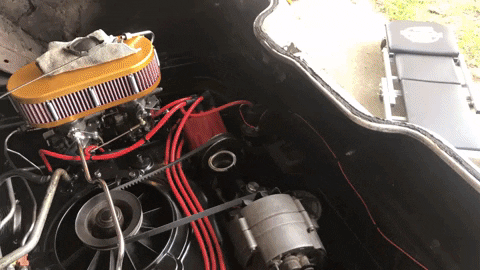5 tips to keep your favorite car’s fluids in top shape
The joy of driving is so easily interrupted by any number of problems; thankfully, the key to preventing many of those issues comes down to keeping the fluids in your car fresh. Though the liquids throughout your car vary widely according to their task, the process of changing each one is similar. We found a great tutorial by ChrisFix over on YouTube to help you change each important fluid in your car, but here are five extra tips to keep in mind as you go through the process.
Inspect, but lean on the safe side

The fluids in your car may be serviceable using most home inspection methods, but if you don’t have a record of when items like brake fluid or gear oil were last changed, flush and replace. New oil and coolant are affordable compared to the cost of rebuilding or replacing hard parts.
Catch it

I’ll admit that I’ve rigged up some questionable setups to catch oil as it drains. Even in the (rare) instances a homemade contraption works, you’ll have to concoct another plan to transfer the drained fluid into a container you can use to actually recycle the oil. Invest in a nice catch pan—it’ll make your life a lot easier.
Particularly nice versions can be sealed, which means you can take the container and its contents straight to a business that recycles oil (most national auto parts chains offer this service for free) without transferring it into a jug or other container. Be sure to clean your drain pan both before and after use; cross-contamination can make fluids unrecyclable that would otherwise be acceptable on their own. For example, most recycling locations refuse oil mixed with coolant.
Refill with the right stuff

Check your service manual to ensure that you top off with the the correct compound. Any parts house will be stocked to the rafters with the latest and greatest blends of this and that, and each one, naturally, claims to be the best. Be proven solutions, not sensational gimmicks. Trust your owner’s manual (or other authoritative sources) to tell you the requirements for each application. For instance, antique engines like a Model A Ford’s may require non-detergent oils since they lack an oil filter to catch particulate that the oil would loosen from the internals of the engine.
Be safe

Most fluid changes on cars require access to the underside of a car. Properly lifting and supporting your car is only the starting point. Eye protection is critical for these jobs; gravity is now your enemy. It will try to pull not only the fluid you are draining into your eye sockets, but also every piece of dirt and debris that is currently stuck to the bottom of your car. The fluid you’re draining will want to drip into your face, and suddenly every piece of dirt and debris stuck to the bottom of your car will make a beeline for your eye sockets.
Gloves are also a good idea, and not simply for cleanliness. Most automotive fluids are toxic and readily absorbed through the skin, where they are carried to the liver and can cause long-term health issues.
Be vigilant

Some folks accept that vintage cars leak, well, just about every fluid. You may decide that fixing those leaks is too much of a pain (and you shouldn’t take this stance—leaks can be fixed). In that case, keep a careful eye on the fluid levels to ensure no critical systems run dry. If you have a regular leak—or even if you don’t—keep a quart of appropriate fluid in your trunk to be prepared for inevitable top-offs. Leaks can get worse at a rapid pace, so even if your oil is typically fine after two tanks of gas, a quick check is free and an engine rebuild certainly isn’t. Why risk it?
Refreshing fluids is a task just about any enthusiast can tackle on their own, so there’s no reason to let your ride languish. A happy car makes for a happy driver, so be sure to attend to its needs as you prepare to hit the road.

